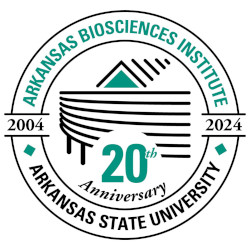In Vitro Biocompatibility of Decellularized Cultured Plant Cell-Derived Matrices
Document Type
Article
Publication Title
ACS biomaterials science & engineering
PubMed ID
33464854
MeSH Headings (Medical Subject Headings)
Cells, Cultured; Extracellular Matrix; Humans; Materials Testing; Plant Cells; Tissue Scaffolds
Abstract
There has been a recent increase in exploring the use of decellularized plant tissue as a novel "green" material for biomedical applications. As part of this effort, we have developed a technique to decellularize cultured plant cells (tobacco BY-2 cells and rice cells) and tissue (tobacco hairy roots) that uses deoxyribonuclease I (DNase I)). As a proof of concept, all cultured plant cells and tissue were transformed to express recombinant enhanced green fluorescent protein (EGFP) to show that the proteins of interest could be retained within the matrices. Decellularization of lyophilized tobacco BY-2 cells with DNase for 30 min depleted the DNA content from 1503 ± 459 to 31 ± 5 ng/sample. The decellularization procedure resulted in approximately 36% total protein retention (154 ± 60 vs 424 ± 70 μg/sample) and 33% EGFP retention. Similar results for DNA removal and protein retention were observed with the rice cells and tobacco hairy root matrices. When exposed to decellularized BY-2 cell-derived matrices, monolayer cultures of human foreskin fibroblasts (hFFs) maintained or increased metabolic activity, which is an indicator of cell viability. Furthermore, hFFs were able to attach, spread, and proliferate when cultured with the decellularized BY-2 cell-derived matrices in an aggregate model. Overall, these studies demonstrate that cultured plant cells and tissue can be effectively decellularized with DNase I with substantial protein retention. The resulting material has a positive impact on hFF metabolic activity and could be employed to create a three-dimensional environment for cell growth. These results thus show the promise of using naturally derived cellulose matrices from cultured plant cells and tissues for biomedical applications.
First Page
822
Last Page
832
DOI
10.1021/acsbiomaterials.9b00870
Publication Date
2-10-2020
Recommended Citation
Phan, Nhi V.; Wright, Tristen; Rahman, M Masrur; Xu, Jianfeng; and Coburn, Jeannine M., "In Vitro Biocompatibility of Decellularized Cultured Plant Cell-Derived Matrices" (2020). Arkansas Biosciences Institute. 64.
https://arch.astate.edu/abi/64



Comments
To read this article, please request a copy through InterLibrary Loan.